Every now and then we see breaking news about huge waves being surfed around the world. Places like Half Moon Bay (Mavericks), Puerto Escondido, Peahi (Jaws), Waimea Bay and Nazare have been on the map of the big wave surfing for a long time. Year after year, big riders (giant wave surfers) develop new training methods and brands come up with new security equipment for them, because at the end of they day, what matters the most is getting everybody safe back to shore.
Measuring Waves
Measuring waves is always quite a subjective thing. Hawaiians can say a wave measures 20ft big when Californians will say the same wave is 30ft tall. Obviously big wave surfing is scary. There is 50ft of white water and so much ocean moving towards surfer. Big wave surfers know the ocean is in charge and if they go under a big wave, they can get disorientated and the impact is like being hit by a truck.
Wave Surfing Disciplines
There are really two disciplines for big wave surfing.
a) paddle big wave surfing, where you use your arms to paddle into position on the wave. That is the traditional way.
b) tow-in surfing, which is where we use a jet ski and tow rope to tow the surfer into the wave. The bigger the wave, the faster they move, so it becomes physically impossible to paddle at the same speed. When the jet ski matches the speed of the wave, the surfer lets go of the rope and the surfer is on their own. Depending on the conditions, a jet ski will be needed. Even if surfers are still paddling to catch waves, a jet ski can be really important to perform rescues after heavy wipeouts.
Tow-in boards are shorter and heavier, so maybe about 5ft 11in long, 11in wide and 2in thick, but they weigh about 12kg so they are heavy enough to keep the board in the water. Although big waves tend to be bumpy, the weight keeps the board in the water. They are also made with a plastic composite so the board flexes and you don’t feel every bump. But paddleboards are about 10ft 6in long, 22in wide and 4in thick. They give you more buoyancy to get the board moving quickly and down a wave. They don’t flex as much either.
When surfers get held underwater, they tend to just zone out and go to a place where they think are going to be fine. Best think is to go all floppy and limp and go with the flow. You can’t fight it. Some still wear flotation devices and other safety equipment. Wipeouts can last 40 seconds underwater, but big riders can hold their breath for 5 minutes if they have to. You should train to hold your breath because we normally only breathe with the top of our chest and use about a fifth of our lung capacity.
Surfing is a small community and big wave surfing is even smaller. Although they all have a rivalry over the best waves there is also camaraderie. They look out for each other. If someone is in trouble, they know we are the only other people who can save them so there is a real bond between them. (to know more about surfing etiquette, check our partner’s blogpost)
For all those reasons above, big wave surfing is something not recommended for beginners. Only a handful of guys in the world are really prepared to be part of this scenario, and if you, beginner surfer, feels like you can ride big waves in the future, better to get prepared since now. Do yoga, apnea, cardio exercises, meditation and try to surf as much as you can, but never risk your life putting yourself in situations that you are no prepared to be.





